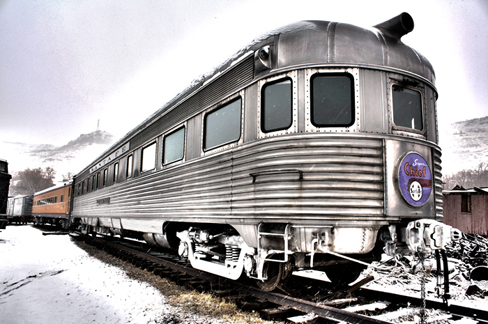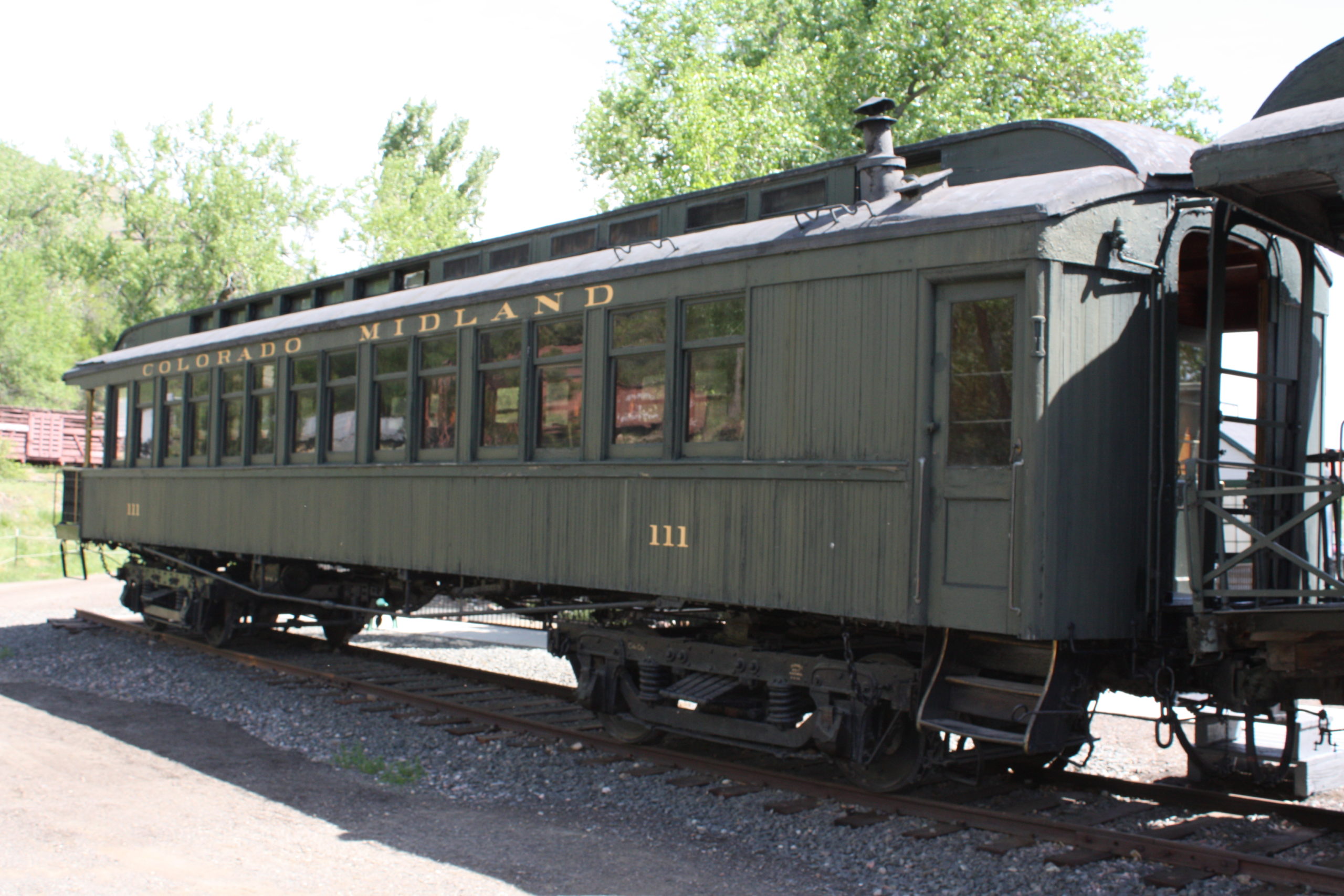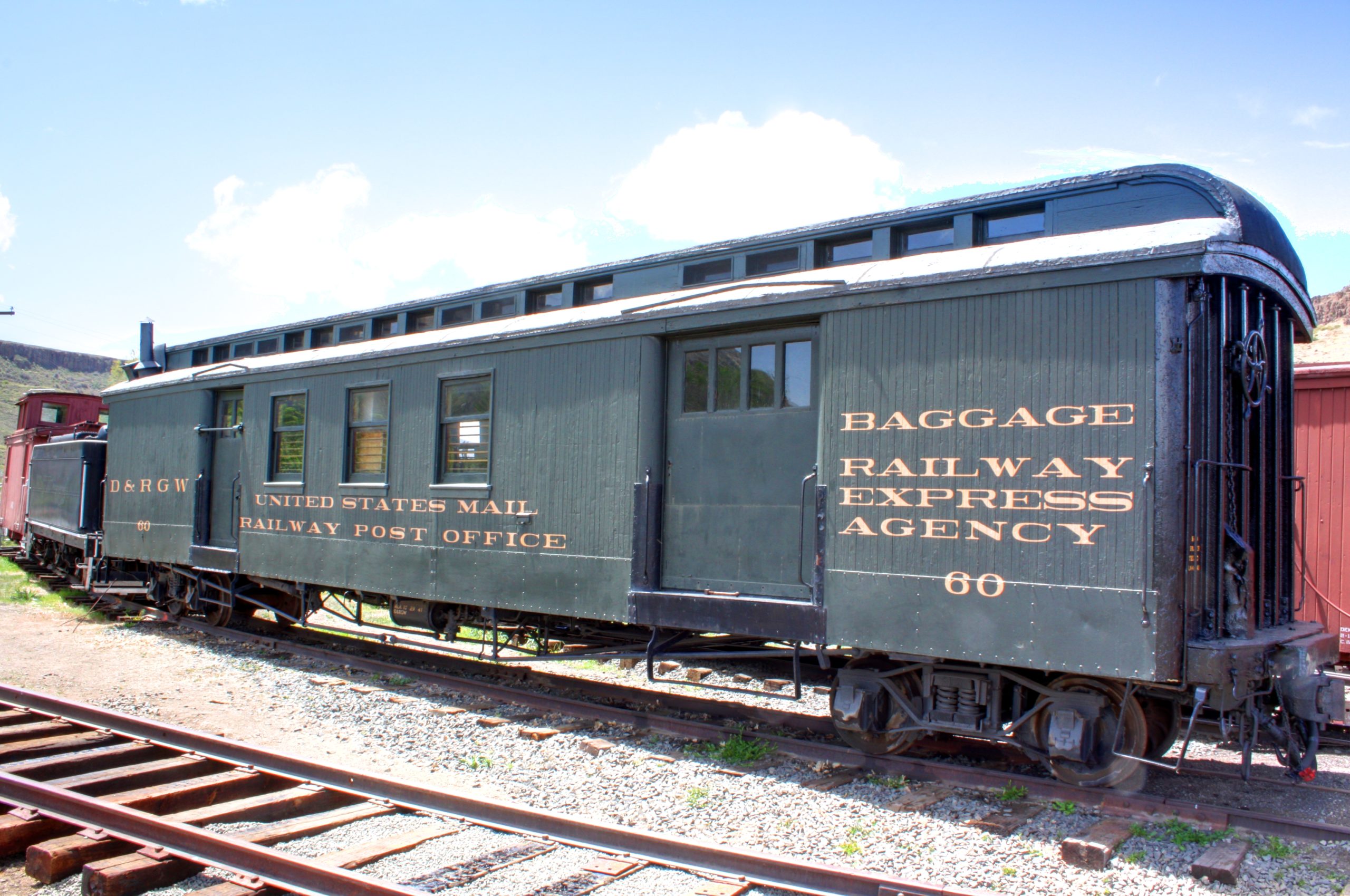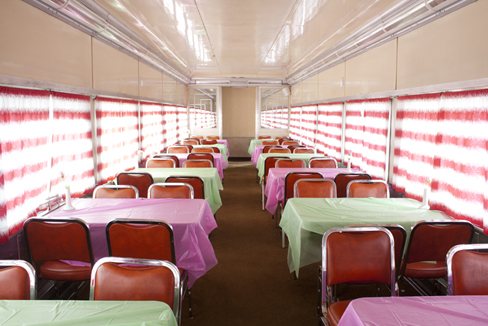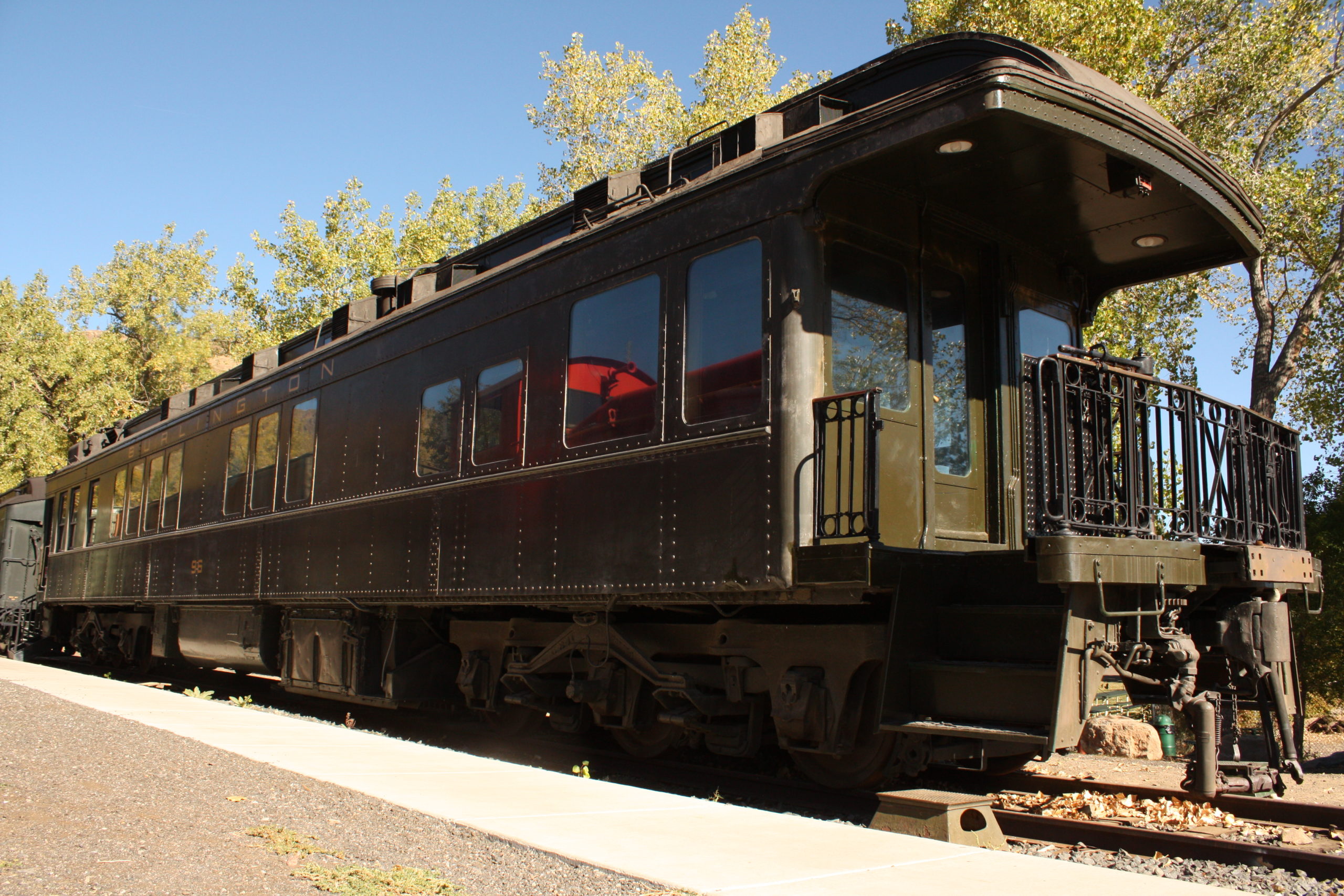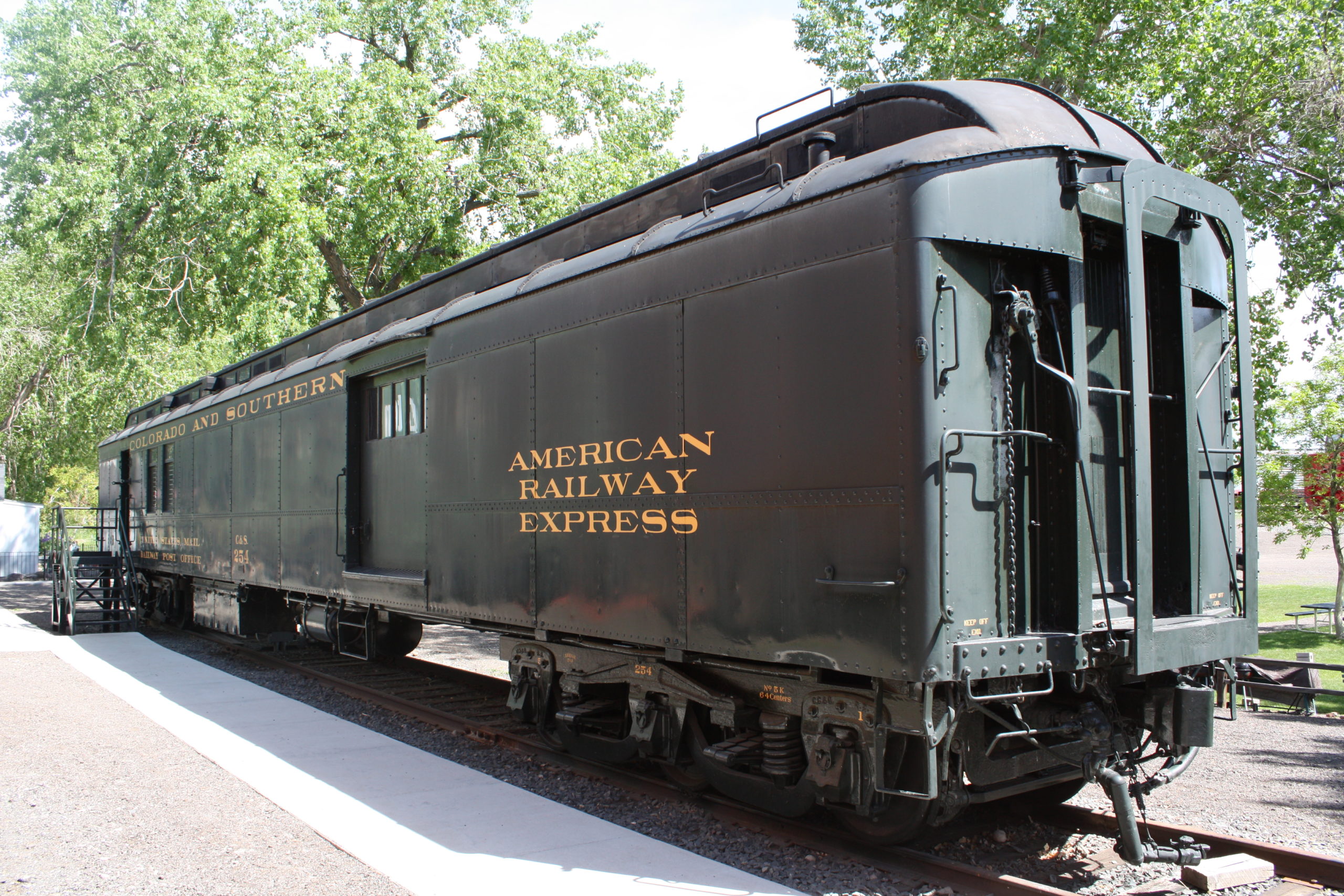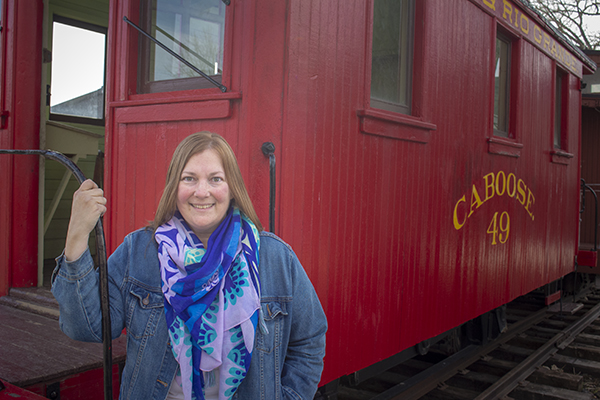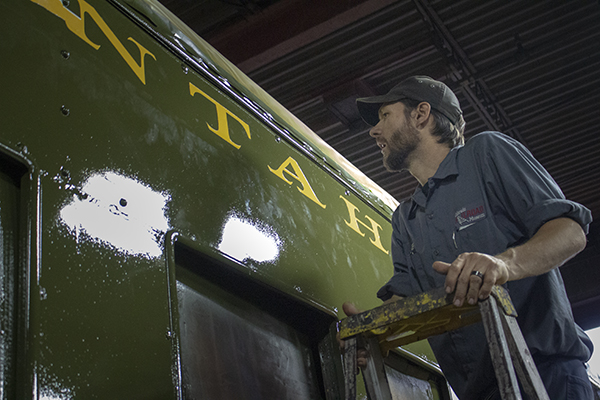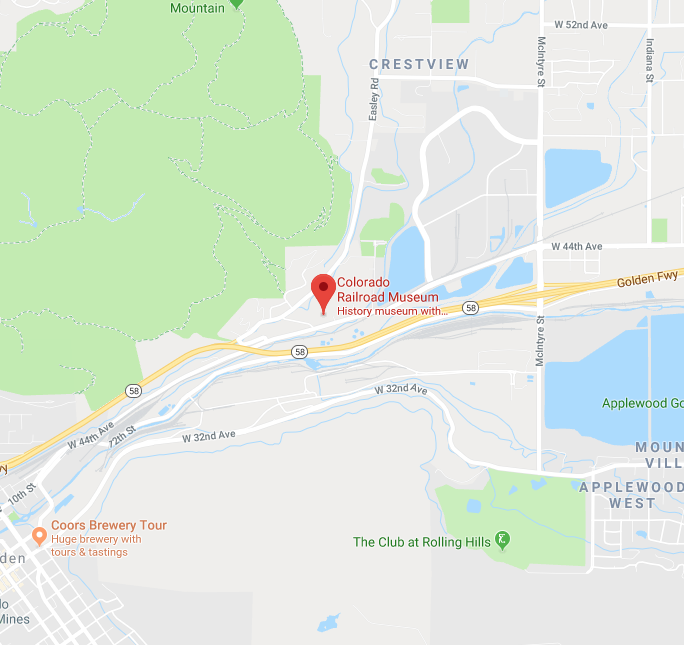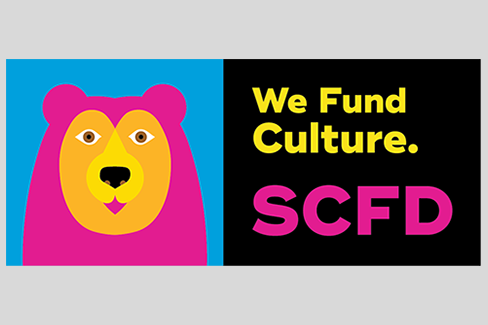Business and Passenger Cars
The earliest passenger cars, called coaches, carried passengers across the country on narrow velvet seats. Passengers had to bring their own food for the entire journey and spent hours sitting upright in a hot and crowded car. The invention of sleeping, observation and dining cars made long distance travel much more comfortable.
In the following descriptions, (N) indicates narrow gauge and (S) indicates standard gauge.
EXPLORE MORE OF THE MUSEUM
Atchison Topeka & Santa Fe Observation Car Navajo (S)
This stainless steel streamlined observation and sleeping car ran between Chicago and Los Angeles on the Super Chief, the first diesel-powered, all-Pullman passenger train in the country. A significant portion of the 39-hour journey was through the American southwest. Native American heritage was reflected in the interior decor and name of each car.
Colorado Midland Observation Car No. 111 (S)
Frequently used on trains west of Colorado Springs, No. 111 was often used on “wildflower excursions” near Pikes Peak. As the season and location permitted, the train would stop to allow passengers to get off and enjoy the scenery and pick clusters of wildflowers.
Click here to watch Big Train Tours: Colorado Midland Observation Car No. 111
Denver & Rio Grande Western Railway Post Office Car No. 60 (N)
Railway post office (RPO) cars were designed for use by the Post Office’s Railway Mail Service to receive, sort and deliver letters and packages all across America. RPO cars were discontinued in the 1960s in favor of airplanes and trucks.
Union Pacific Diner No. 4801 (S)
Dinner in the diner car was a highlight of any train trip. The 48-seat diner No. 4801 was one of 17 built for Union Pacific in 1949 by American Car & Foundry for use on the streamliners City of Los Angeles, City of San Francisco, City of Portland and City of Denver. Fine meals were cooked to order in a small galley staffed by a chef and three cooks, and were served by a staff of up to six waiters under the direction of a steward. Tables were set with specially designed china and silverware. No. 4801 was acquired by Rio Grande in 1979 as a spare for the Silver Banquet, the original dining car on the Rio Grande Zephyr.
Click here to watch Big Train Tours: Union Pacific Dining Car No. 4801
Chicago Burlington & Quincy Business Car No. 96 (S)
No. 96 was built by CB&Q as a traveling office with overnight accommodations and kitchen facilities. Up to twelve officers, board members or friends of the railroad could travel in quiet comfort to cities and towns served by the railroad.
Colorado & Southern RPO Car No. 254 (S)
C&S Railway ordered five postal cars, including No. 254, in the 1920s from the Standard Steel Car Company and AC&F to replace older wooden cars. These included a section for baggage and express mail as well as a compartment for use of the postal service. Railway Express provided in its time the same service that UPS, FedEx and similar companies do today. The new cars operated on the Billings & Denver and Denver & Amarillo RPO routes until these were discontinued in 1967.
Click here to watch Big Train Tours: C&S RPO No. 245
Denver & Rio Grande Western Coach No. 284 (N)
This coach seated up to 44 passengers. A stove at the end of the car provided heat during the winter while open windows cooled the car during warm summer months. The plush velvet seats had backs that reversed so passengers could always face in the direction of travel.
Click here to watch Big Train Tours: D&RGW Coach No. 284
Union Pacific Coach No. 5442 (S)
Built of steel and aluminum alloys after World War II, these sleek, lightweight cars were part of a move made by the railroads to build fast, modern streamliners to entice travelers back from automobiles and airplanes.
